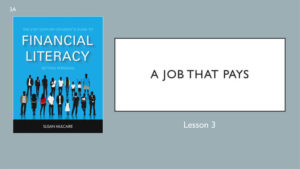In just a few short years, your students are expected to join the ranks of the gainfully employed.
That’s right! They will be getting grown up jobs, and will begin living their adult lives complete with loads of grown up responsibilities.
For their generation, the projected age of retirement is 73. That’s about 50 years in the workforce before retiring. They should give some thought to how they plan to earn an income.
Unit Theme
Earning an Income
Lesson topics
- Jobs vs. careers
- Developing career awareness
- The benefits of career education
- Labor demand and compensation
- Postsecondary alternatives to a traditional 4-year college
- Mastering the resume
Lesson Objectives
Lesson objectives aligned to NSFL.
| Objective | NSFL Gr. 8 | NSFL Gr. 12 |
|---|---|---|
| Distinguish between a job and a career | I-1 | I-1, I-4 |
| Equate education level with earnings potential and job security | I-2, I-3 | IV-2 |
| Tell how labor demand can impact salary | I-5 | I-5, I-6 |
| List five alternatives to a traditional four year college education | ++ | I-3, I-4 |
| Draft a basic resume | ++ | ++ |
| Interview a professional about career education and preparation | I-1, I-2 | I-2 |
| (Opt.) Create and use a Dropbox account to save and share the results of their Copy Cat Career project | ++ | ++ |
++ Exceeds NFSL
Teach the Teacher Podcast
Listen to this lesson’s podcast episode:
What Does That Mean? e-flashcards
Lesson Three has 15 personal finance and money management vocabulary terms.
Cover letter
A formal letter accompanying a resume which describes the reason for sending the resume.
Career
An occupation or profession someone does for a long time, often requiring special skills or training, with opportunity for advancement.
Career tech education
“CTE”; a postsecondary program of study involving multiyear courses combining academic knowledge with technical and occupational knowledge.
Curriculum vitae
“CV”; similar to a resume, but more frequently used by job seekers in the science and academia fields who have published works in journals, and by overseas job seekers.
Fair Labor Standards Act
Federal law that sets minimum wage, overtime pay, child labor laws. graduate school a division of a university offering advanced degrees beyond the bachelor’s degree; grad school.
Generation Z
“Gen Z”; Generation following the millennial generation; born approximately between 1995-2012.
Human resources
“HR”; the people who make up the workforce of an organization; also refers to the division of a company that manages employees.
Human capital
The collective skills, knowledge, or other intangible assets of individuals that can be used to create economic value for them or their employers.
Job
Work done regularly to earn a paycheck.
Job description
A general written statement about a specific job including duties, purpose, responsibilities, scope, working conditions, and job title.
License
A permit from an authority to do a particular thing or carry on a trade.
Minimum wage
The lowest hourly wage an employer can pay an employee for work as set by federal law under the Fair Labor Standards Act.
Recession
A significant decline in economic activity across all areas of the economy or within a specific industry, which lasts longer than a few months.
Resume
A document presenting a job seeker’s education, skills, and work experience.
Wages
Monetary compensation.
Classroom Instructional Slides
Access these slides to facilitate instruction and maintain students’ focus.

